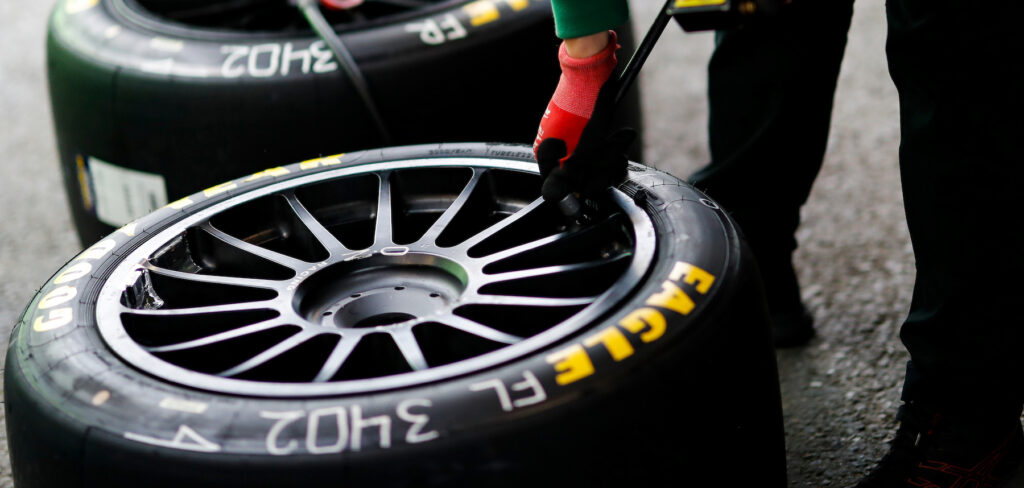Following the announcement that tire warmers will no longer be used within the LMP2 class of the 2023 FIA World Endurance Championship season to make it more sustainable, Goodyear has predicted that teams will make changes to enhance their race strategies.
As the exclusive tire supplier for the category, Goodyear will provide a single type of slick and a single type of wet tire to the class during the 2023 season. In 2022, the tire maker made the decision to remove the intermediate tire from the range to reduce the overall number of tires used over a race weekend. Goodyear made this possible by widening the operating window of both tire types, through the implementation of a new compound and product design.
This season will visit seven circuits on three continents, starting at the historic Sebring Raceway on March 17 before finishing under the lights of Bahrain on November 4. Without tire warmers, the teams will now face new challenges related to tire temperature. Due to the changes, both the FIA and Goodyear will introduce minimum tire pressures and maximum camber angles to aid teams with tire management. These minimum values are intended to stop teams from implementing setups that are too aggressive to warm tires up faster.
“It’s an exciting new challenge for drivers and teams to get a handle on,” said Mike McGregor, endurance program manager, Goodyear Racing. “From our perspective, it’s likely to mix up the field from race to race and increase strategic opportunities.
“The effect of this rule change will differ dramatically from circuit to circuit. In warmer climates such as Sebring and Bahrain, tires should reach their optimal operating window within two laps. However, in colder races there will be a more considerable difference. Drivers will need to balance overdriving the tires in the first few laps as pressures stabilize.
“The surface of the tire will be more important to manage during the opening laps, and with the total allocation unchanged since last year, the first few laps of tire warm-up will be crucial, as this has a huge impact on tire pressure and, ultimately, how much grip a driver feels. During races, the overcut will be more powerful, as too will be extending stints to decrease the number of pitstops needed, particularly at Le Mans.”



